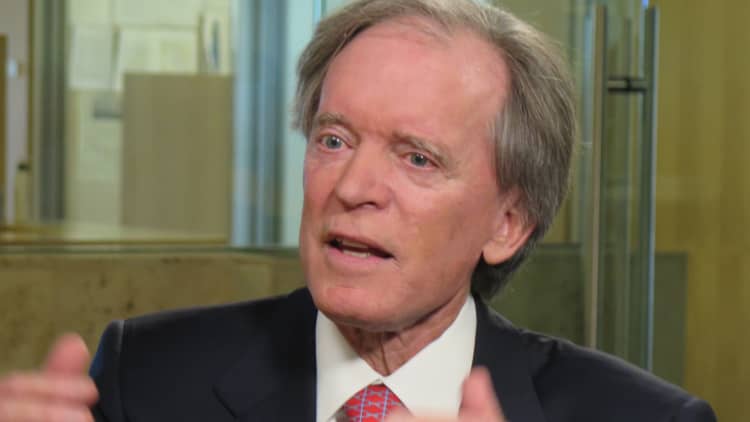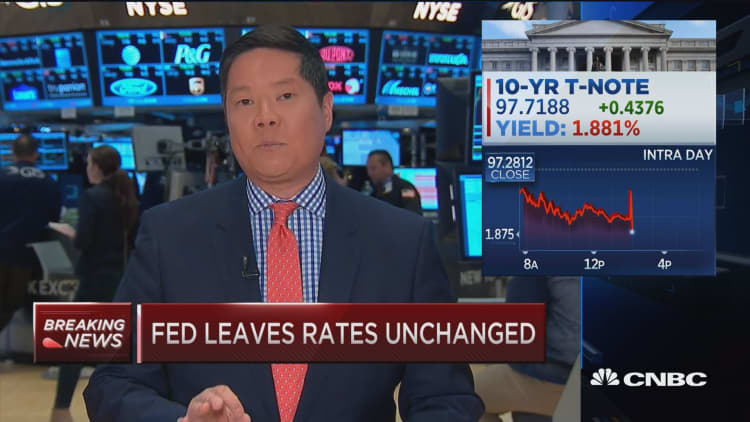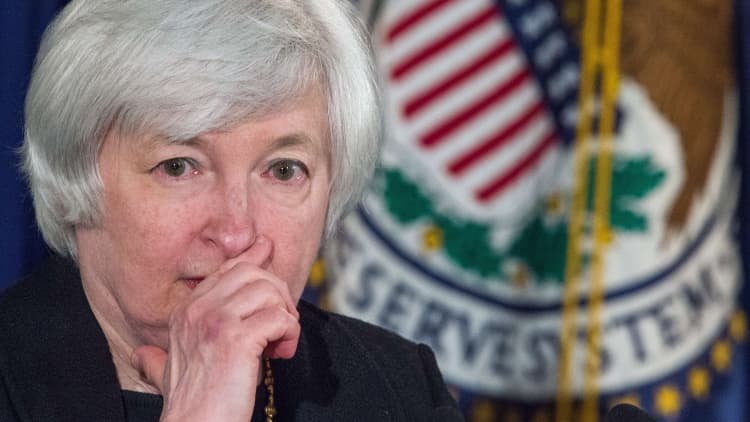


Amid a moribund economy and reduced levels of consumer spending, the Fed on Wednesday again opted not to raise interest rates.
"Economic activity appears to have slowed," the Federal Open Market Committee said in a statement released after its two-day meeting this week. "Growth in household spending has moderated, although households' real income has risen at a solid rate and consumer sentiment remains high."
The statement highlighted the many conflicting signs in the U.S. economy – consistent job growth and an improving housing market against slowdowns in business investment and exports. Indeed, the Atlanta Fed has estimated that economic growth slowed to just 0.6 percent in the first quarter of 2016, a condition reflected in the Fed's lukewarm assessment of conditions.
The statement struck a decidedly dovish tone, and only one FOMC member, Esther George of Kansas City, dissented. George has been a voice for the hawkish element at the Fed that wants to see the U.S. central bank get back on the road to normalization. George advocated for a quarter-point hike, which would take the current range to 0.5 percent to 0.75 percent.
Prominently missing from the statement was a "balance of risks" assessment, a mainstay of Fed communiques in which the Fed described how conditions were shaping up compared to its expectations. Fed watchers have taken the absence of the language from the past two statements as indications that FOMC officials remain concerned about growth both domestically and internationally.
"That tells me that June is effectively off the table," said Joseph LaVorgna, chief U.S. economist at Deutsche Bank. "They did not do enough, they have to put that statement back in for them to hike rates."
Inflation has been elusive for the Fed despite its easy policy path. The central bank kept its rate target near zero for eight years, yet failed to generate inflation above its 2 percent target. The statement reiterated the official stance that inflation will rise toward 2 percent "over the medium term" but is being held back by "the transitory effects of declines in energy and import prices."
Financial markets reacted positively to the statement, with stocks notching slight gains from their position before the release.
"They're responding to market conditions," LaVorgna said of the Fed. "It's (making) it harder for them to take rates to where they should be. The rate should be higher but the Fed is having a hard time getting it where most economists say they already should be."
To be sure, Wall Street wasn't totally taking June off the table for a hike. FOMC official stress data dependence, and if inflation should start to build that would change the equation.
"I saw a couple of points on either side," said Carl Tannenbaum, chief economist at Northern Trust. "The removal of the passive identifying global risks to the outlook might be viewed somewhat less dovishly. It sound like the committee was marginally more comfortable with international risks at this meeting."
The committee cut its assessment of household spending, indicating it "has moderated" after describing it as "increasing at a moderate rate" following the March meeting. The March statement also had noted that inflation "has picked up in recent months," but April's assessment was that it "continues to run below the committee's 2 percent long-run objective."
In addition, the statement added language indicating that the FOMC "continues to closely monitor … global economic and financial developments." That was a slight tweak from April, in which the committee said the international headwinds "continue to pose risks."
The Fed hiked its target rate a quarter point in December, the first such move in more than nine years. At the time, FOMC members, through the "dot plot" of future expectations, had indicated four hikes were likely this year. At their last meeting, though, that same plot suggested only two hikes this year.
CORRECTION:
This story has been updated to reflect the latest Atlanta Fed estimate for GDP growth.




